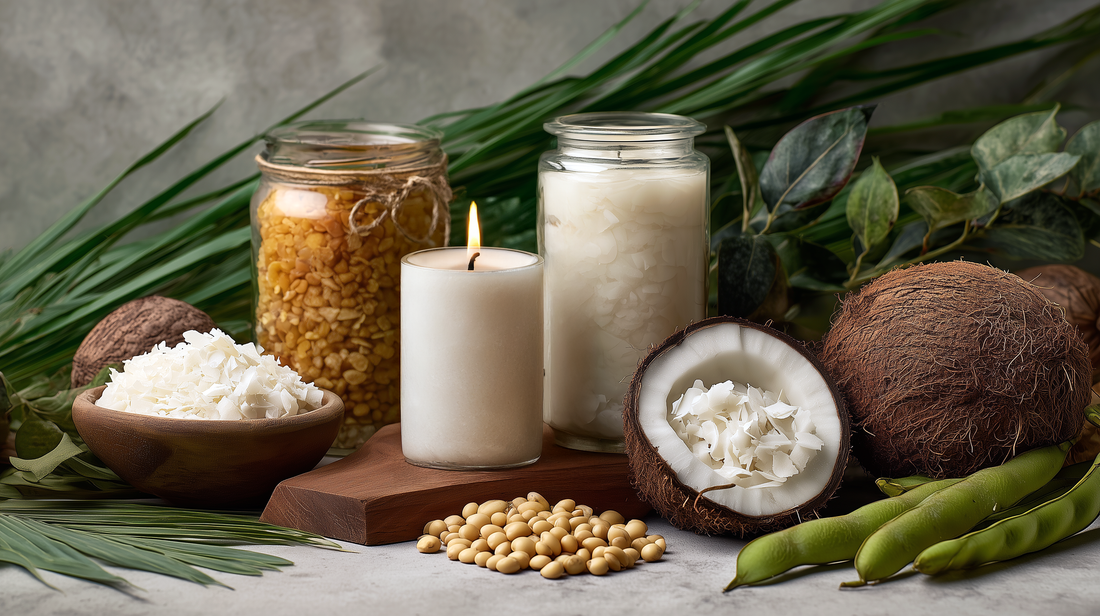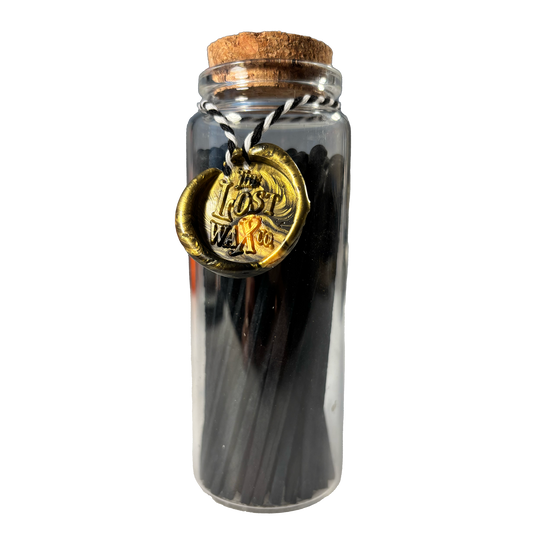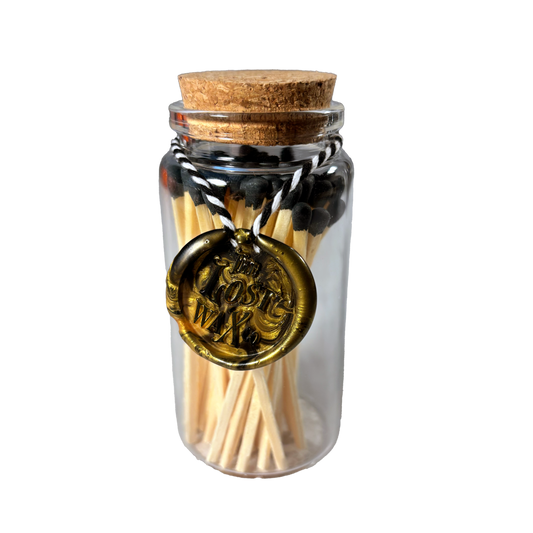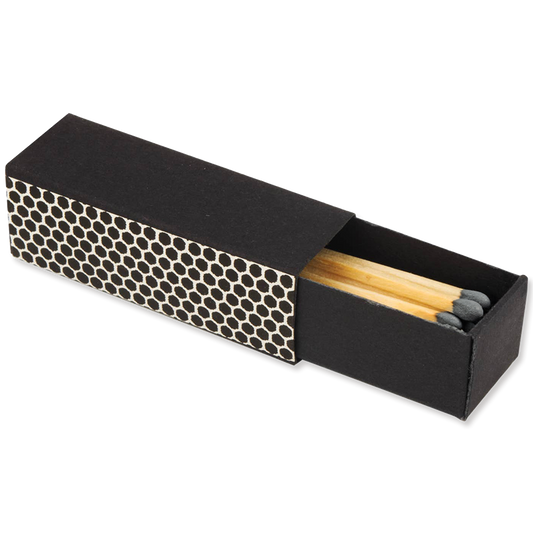
The Truth About Soy Wax Candles
Why Soy Wax is the Real MVP of Candles (Sorry, Paraffin)
If you’ve ever lit a candle on a cozy evening, you know the magic: a soft flicker, a warm glow, a scent that makes the whole room feel like home. But have you ever stopped mid-sniff to wonder what exactly you’re burning?
That charming little flame isn’t just ambiance — it’s chemistry in action. And depending on what your candle is made of, you could be filling the room with fresh, natural fragrance… or microscopic soot and questionable fumes.
Let’s talk about soy wax — the sustainable, clean-burning superstar — and why it deserves a permanent spot in your candle lineup over old-school paraffin. We’ll even invite beeswax to the conversation… briefly.
From Field to Flame — Made in the USA
Soy wax starts its life in a farm field, not a refinery. It’s made by hydrogenating soybean oil, turning it from a liquid into a creamy, solid wax perfect for candle-making. Since soybeans are one of the most abundant crops in the United States — with the U.S. producing about 34% of the world’s soybeans — your soy candle is rooted in American soil. That means every purchase supports local farmers and rural economies.
The journey from soybean to soy wax is refreshingly short compared to paraffin, which is born in oil refineries as a byproduct of petroleum processing. Before paraffin hits store shelves, crude oil is drilled, shipped, refined, distilled, bleached, and chemically treated. Not exactly the kind of “natural” vibe you want glowing in your living room.
Clean Burn, Cleaner Air
One of soy wax’s biggest bragging rights is how cleanly it burns. Light a paraffin candle and you may notice a fine black ring around the jar or faint soot marks on the wall. That’s not just dirt — paraffin combustion can release trace amounts of compounds like benzene and toluene, both classified as harmful when inhaled in large amounts over time.
Soy wax burns with significantly less soot, which means fewer airborne particles in your home and cleaner air for you, your family, and your pets. You’ll also find that the jars and holders stay cleaner, so you can actually reuse them without scrubbing off a stubborn layer of black residue. Your lungs and your décor will both thank you.
Long Burn Means More Bang for Your Buck
If you’ve ever been sad to see a paraffin candle burn down in just a few evenings, soy wax offers a happy solution. It burns at a lower temperature than paraffin, which means it melts slower and lasts longer — often 30–50% more burn time from the same size candle.
That slower burn also means the fragrance is released more gradually, so you’re not “using up” all the scent in the first hour. With soy, you get a candle that sticks around for more cozy nights, more holiday dinners, and more bath-time relaxation sessions before it’s just an empty jar.
Scent Throw — Just Right
Paraffin has a reputation for a strong scent throw — meaning it fills a room with fragrance quickly — but it can sometimes be too much, and the base wax can give off its own faint chemical aroma. Soy wax, on the other hand, has a more subtle, true-to-life scent.
Because soy burns cooler, the fragrance oils are released slowly and evenly, creating a consistent scent experience from the first lighting to the very last flicker. You’re not hit with an overpowering blast right away, but rather a steady, inviting aroma that gently lingers — like background music you enjoy all day without realizing it’s there.
Renewable and Biodegradable
Soybeans are a renewable crop, grown and harvested every year. That makes soy wax a much more sustainable choice than paraffin, which comes from finite fossil fuels. When you’re done with a soy candle, it’s biodegradable — it will naturally break down over time rather than lingering in a landfill for centuries.
And while soy wax won’t dissolve in water, it’s softer and lower-melting than paraffin, which makes cleanup easier. A little gentle heat and some soap will usually take care of drips on tables or countertops, without the scraping and scrubbing paraffin often requires.
What About Beeswax?
Beeswax is a classic choice, beloved for its warm, honeyed scent and long burn time. It even releases negative ions, which some say help clean the air (though the science is still fuzzy on that). But beeswax is expensive, often two to three times the cost of soy. It’s also a limited resource — the health and availability of bees directly impacts supply — and it doesn’t hold added fragrance as well. It's not very consistent between batches, which means that candles made from beeswax could vary from one batch to the next.
Soy wax offers a scalable, affordable, and vegan-friendly option that’s still eco-minded, making it a better everyday choice for most households.
What About Other Waxes and Blends?
Soy may be our star, but it’s not the only plant-based wax in the game. In recent years, coconut and apricot waxes have made a splash in the candle world — often as premium options or blended with soy for a better burn.
Coconut wax is made from the oil of coconuts, a highly renewable resource. It burns slowly, has an excellent scent throw, and creates a smooth, creamy finish in candles. The downside? It’s pricey, and because pure coconut wax is soft, it’s usually blended with soy or another wax to give it more structure.
Apricot wax is less common but gaining popularity. Made from the oil of apricot kernels, it shares many of soy’s virtues — renewable, biodegradable, and clean-burning — but with a slightly higher melting point, making it great for warm climates. Like coconut, it’s often used in blends for the best balance of burn time, scent throw, and appearance.
Some of our limited-edition candles are made with a blend of coconut, apricot, and soy waxes.
The Bottom Line
When you light a soy candle, you’re not just making your home smell amazing — you’re:
- Supporting U.S. farmers and rural communities
- Choosing a cleaner burn for your air, walls, and furniture
- Getting longer-lasting candles for your money
- Reducing your environmental footprint with a renewable, biodegradable material
Paraffin had its time. But with the rise of eco-conscious living and better ingredient awareness, soy has taken the lead.
So next time you shop for candles, skip the oil-refinery leftovers and choose the clean, renewable glow of soy wax. Your lungs, your wallet, and maybe even a farmer in Iowa will thank you.




